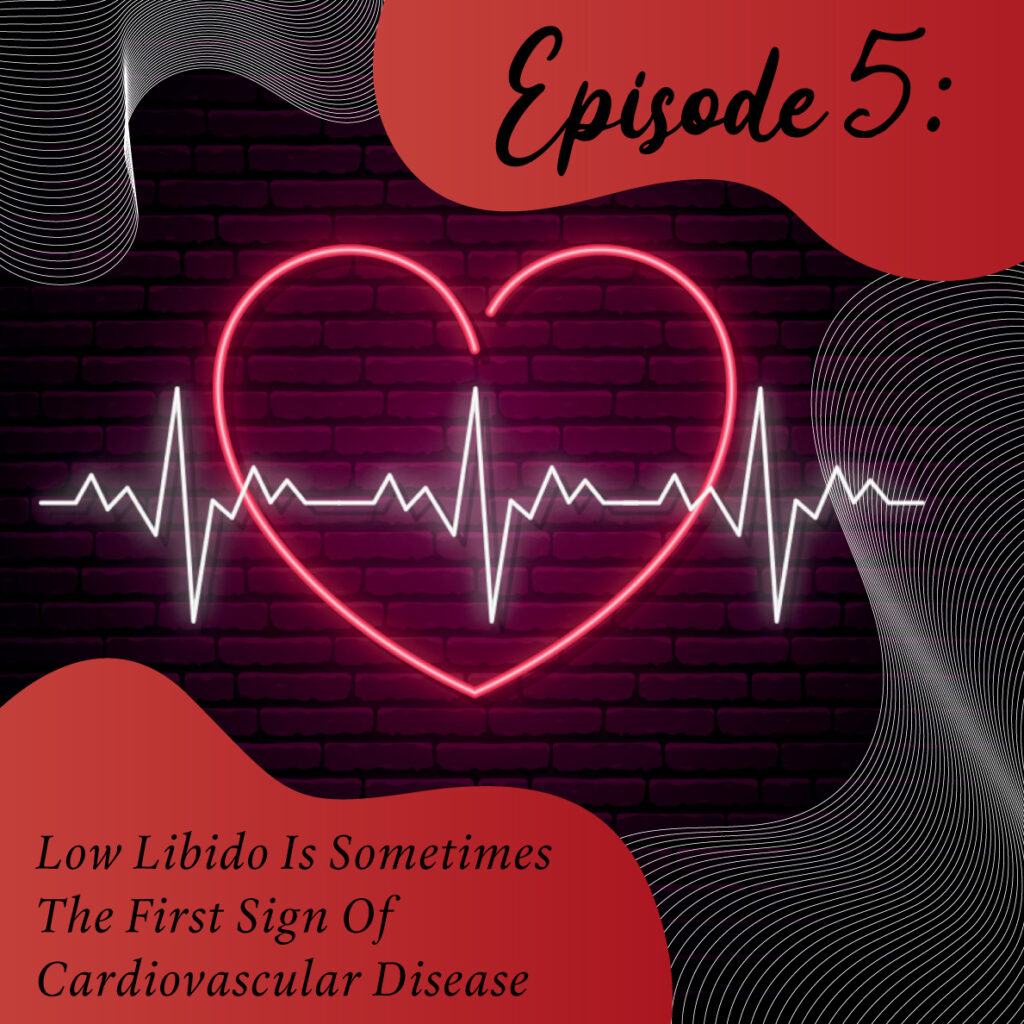Female sexual dysfunction… Sounds like a technical medical term… What exactly does it mean?
Female sexual dysfunction is a term used to describe various persistent challenges that some women may encounter in their sexual experiences. It encompasses a range of issues related to sexual desire, arousal, lubrication, orgasm, and pain during sexual activity.
From Perimenopause to Postmenopause: The Menopausal Journey
You may have less interest in sexual activity, pleasure, thoughts, and fantasies. There is a lack of desire, arousal or of physical genital response to sexual stimulation. This can fall into different categories:
- A persistent absence of sexual desire
- An inability to get or stay excited during sexual activity
- A difficulty in achieving orgasm
- Pain associated with stimulation or sexual intercourse
- Female sexual dysfunction can be a big issue. It can have a huge impact on a woman’s overall sexual satisfaction and well-being.
- What are the Symptoms of Female Sexual Dysfunction?
- If you aren’t sure if this is you, let’s look at what it feels like to have female sexual dysfunction. Signs and symptoms are:
- You have a lack of sexual interest and willingness to be sexual.
- Your desire for sex may still be there but you are having a hard time getting aroused or maintain arousal during sexual activity.
- You may have a recurring issue with achieving orgasm after sufficient sexual arousal and ongoing stimulation.
- You may have pain associated with sexual stimulation or vaginal contact.
What are the Causes of Female Sexual Dysfunction?
These problems can be caused by physical, psychological, or relationship factors.
- Physical: Medical conditions may be the root cause. These may include cancer, kidney failure, MS, heart disease or bladder problems, which can lead to sexual dysfunction. Certain medications, some antidepressants, blood pressure medications, antihistamines and chemotherapy drugs, can decrease sexual desire and the ability to achieve orgasm.
- Hormonal: The physical issue may be due to hormonal imbalances or changes experienced in peri- and menopause. Lower estrogen levels after menopause can cause changes in genital tissue and sexual responsiveness. A decrease in estrogen leads to decreased blood flow to the pelvic region.
This can mean less genital sensation, or needing more time to build arousal and reach orgasm. The vaginal lining becomes thinner and less elastic, this can mean that intercourse is painful. Sexual desire also decreases when hormonal levels decrease. Hormone levels also change after giving birth and during breast-feeding, which can lead to vaginal dryness and can reduce the desire to have sex. - Psychological: Issues such as stress, anxiety, depression, past trauma, body image concerns, or low self-esteem can be involved. The worry of getting pregnant or the demands of being a new mother may have similar effects.
- Relationship: Poor communication, long-standing conflicts with your partner (about sex or other topics within the relationship) can definitely reduce your desire and sexual responsiveness. A lack of true emotional intimacy within the relationship may be the culprit.
- Lifestyle: Excessive alcohol or drug use can contribute. A poor diet or a sedentary lifestyle may be factors. These can make you feel tired, lethargic and not at your optimal level of health.
What are the Solutions to Female Sexual Dysfunction?
Addressing female sexual dysfunction may involve various approaches. It really depends on the specific issue and its underlying cause. Potential solutions include:
- Medical treatment: Hormone therapy, medications, or medical procedures may help alleviate physical issues like hormonal imbalances, vaginal dryness, or pain.
- Psychological therapy: Counseling or sex therapy can address psychological factors like anxiety, depression, or past trauma.
- Lifestyle changes: Improving overall health through exercise, stress reduction, and a balanced diet can positively impact sexual function.
- Communication and intimacy: Openly discussing desires and concerns with a partner can enhance relational aspects of sexuality.
- Education: Learning about one’s own body and sexual response can help build self-awareness and self-acceptance.
Seeking advice from a healthcare professional or therapist is important to determine the most appropriate solution for an individual’s specific needs.
What can You do on your own for Female Sexual Dysfunction?
We recommend that you take the following steps to improve things on your own. If these don’t get you where you want to be, then see your doctor.
Talk to your partner about what you are going through. See if you can change things up to help you get more into it. Longer foreplay, better communication, date nights and time cuddling together may help get you back on track for sex.
As usual, take care of your body. Eat a clean healthy diet with plenty of fresh vegetables and fruit, good protein and healthy fats. Avoid ultra-processed food, fried food and junk food. Drink water. Avoid alcohol or drugs. Exercise. Manage your stress with regular time in nature, yoga, meditation or breath work.
Re-evaluate any medications you may be on, with the help of your doctor. See you doctor for any medical conditions that remain unresolved.
Consider therapy for yourself or with your partner.
We get it. Female sexual dysfunction can be super distressing and affect your wellbeing. Sex is an important part of life and helps support good health.
Work on some of these solutions on your own and go see your doctor if you need help.
It’s nothing to be embarrassed about. Lots of women experience issues with enjoying sex at some point in their lives. The important thing is to recognize it, know it’s not your fault in any way and go get help. Read through some of our blogs for tips on sex and definitely see your doctor if you can’t solve it by yourself.
For more information go back to How To Have Sex
References:
Phillips, N. (2000). Female sexual dysfunction: evaluation and treatment. American Family Physician, 62(1), 127-36, 141-2. This paper discusses the various factors, including medical conditions and psychosocial difficulties, that can cause female sexual dysfunction and emphasizes the role of primary care physicians in proactive diagnosis and treatment.
McCabe, M. (2005). The role of performance anxiety in the development and maintenance of sexual dysfunction in men and women. International Journal of Stress Management, 12(4), 379-388. This study identifies attitudes toward sex, relationship quality, and performance anxiety as main factors related to all types of sexual dysfunction in women.
Lara, L. A. S., Useche, B., Rosa e Silva, J. C., Ferriani, R., Reis, R., de Sá, M. F., de Carvalho, B. D., Carvalho, M. A. C. R., & de Sá Rosa E Silva, A. C. J. (2009). Sexuality during the climacteric period. Maturitas, 62(2), 127-33. This research highlights the bio-psychosocial factors, including relational factors, that interfere with sexual function during the climacteric period in women.
Çayan, S., Akbay, E., Bozlu, M., Canpolat, B., Acar, D., & Ulusoy, E. (2004). The prevalence of female sexual dysfunction and potential risk factors that may impair sexual function in Turkish women. Urologia Internationalis, 72(1), 52-7. This study points out that lower educational level, unemployment status, chronic diseases, multiparity, and menopause status are significant risk factors for sexual dysfunction.
Witting, K., Santtila, P., Rijsdijk, F., Varjonen, M., Jern, P., Johansson, A., von der Pahlen, B., Alanko, K., & Sandnabba, N. K. (2008). Correlated genetic and non-shared environmental influences account for the co-morbidity between female sexual dysfunctions. Psychological Medicine, 39, 115 – 127. This paper suggests that while there is a genetic influence on female sexual dysfunctions, individual-specific environmental factors are the main determinants of which dysfunction develops.





